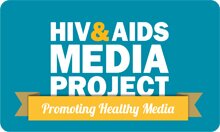Women & HIV
 HIV Prevention for Women
HIV Prevention for Women
This has been a tricky area in HIV prevention because many women are denied any decision making power when it comes to how, when and with whom they have sex.
The female condom
HIV prevention experts and activists have hailed the female condom as the only female-initiated HIV prevention tool currently available, claiming that the FC can empower women to become more involved in condom negotiation.
However the FC is more expensive to manufacture and often hard to source.
Political woes have also dogged the FC; in 2011 a judge had to intervene in the awarding of a tender, stopping unapproved female condoms becoming available to the public.
It is clear that more awareness, education and even political interventions will have to put in place before the female condom beocmes a household name.
Vaginal microbicides
Vaginal microbicides are ARV compounds applied inside the vagina, forming a barrier against HIV infection.
However this promising method is still in the testing stages and is not yet available to the public.
The HIV prevention community feel that vaginal microbicides will be even more effective in preventing HIV than female condoms because even if the male partner refuses to wear a condom and refuses to let the woman wear a female condom, the microbicide is so discrete that the sexual partner won't even know it is being used.
In this way microbicides have the potential to shift HIV prevention completely into the hands of women.
 In South Africa women bare the brunt of the HIV epidemic. An HSRC study conducted in 2008 concluded that a staggering 32.7 percent of women between the ages of 25 and 35 are HIV-positive. In comparison 15.7 percent of men in the same age group are living with HIV. While both statistics are unacceptably high it is clear that women are the sex most affected by the virus. There are a number of reasons for this including increased biological (physical) and social vulnerability.
In South Africa women bare the brunt of the HIV epidemic. An HSRC study conducted in 2008 concluded that a staggering 32.7 percent of women between the ages of 25 and 35 are HIV-positive. In comparison 15.7 percent of men in the same age group are living with HIV. While both statistics are unacceptably high it is clear that women are the sex most affected by the virus. There are a number of reasons for this including increased biological (physical) and social vulnerability.
Biological (physical) vulnerability
Heterosexual women can far more easily become infected through heterosexual penetrative sex than men. Vaginal and/or anal sex is much riskier than other modes of transmission because:
- The vagina and anus have larger areas of exposed and sensitive skin
- The virus can survive for longer in the vagina and the anus than on the surface of the penis where it is exposed to air
- There is more HIV in semen than there is in the fluids of the vagina or anus
- The vaginal and anal walls are much more likely to be ruptured during vaginal or anal sex, especially if the sex is violent or coercive. Cuts and abrasions allow easy access for the HI virus into the blood stream
Socio-Economic Vulnerability
Socio-economic vulnerability is based on gender inequality:
- Cultural and social norms often restrict women’s access to basic information about sexual and reproductive health.
- Even where women have access to this information, they may be unable to negotiate safer sex or the use of condoms in relationships as a result of gender norms that prescribe an unequal, passive role for women in sexual decision making. Marriage does not protect women from HIV infection. More than four-fifths of new infections in women occur in marriage or in long-term relationships with primary partners.
- Women are often economically dependent on their husbands or partners and fear rejection and/or violence if they insist on condom use or abstinence, or disclose their HIV status.
- Practices such as “dry sex”, “widow cleansing” and female circumcision add to women’s vulnerability.
- Because women are traditionally perceived as care-givers the “burden of care” that the HIV epidemic has created more frequently falls to women than men.
- Women and young girls may use sex as a commodity in exchange for goods, services, money, accommodation or even status. This transactional sex ‒ more often than not with older men ‒ is especially prevalent in sub-Saharan and South Africa.
Gender based violence (GBV)
Gender based violence is rooted in socio-economic inequality and can take many forms including emotional, mental and physical abuse. GBV can affect males and females but women and children are most vulnerable because they are seen as occupying inferior positions to men.
GBV & HIV
While women are biologically more vulnerable to HIV infection, it has been found that women who are exposed to GBV are also more likely to be HIV-positive because;
- Small tears in the vagina which allow HIV to enter the body can occur during the often violent act of rape (which can occur between strangers, in relationships and even between people who are married).
- Condom use cannot be effectively negotiated under some circumstances.
- As a result of GBV, women are more likely to have low self esteem and depression and might also enage in substance abuse - all of which can lead to higher sexual risk-taking.
It is not always the violence (e.g. rape) itself that exposes women to HIV. The results of the violence (e.g. low self esteem) can also put women at risk of HIV infection.
Page last updated: 18 October 2011






